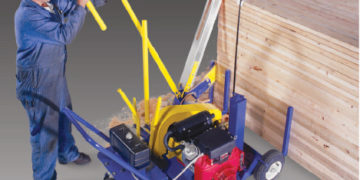Crosscut saws have been around for centuries. Large crosscut saws are the stuff of legends. They appear in movies in both comic and serious roles. They became an early advanced tool of civilization. While axes cut deep into pristine forests during the pioneer days of America and Canada, the crosscut saw continued the onslaught and refined the rough logs into shapes and sizes for homes and furniture.
Manual Crosscut Saws
Crosscut saws cut wood across the grain. They are simple devices consisting of a handle and a blade. They also have many teeth for cutting through the wood. They are arranged in an alternating pattern. Many forestry workers favor them because they do less damage to the wood they are cutting. Large manual crosscut saws feature two handles, therefore improving the speed and capability of the saw to slice through large pieces of wood.
Manual large crosscut saws are available in two different types. These are:
1. Felling saw
2. Bucking saw
Manual versions continue to be in use. You see them for sale on the net and in hardware stores. However, when it comes to modern forestry production facilities, the large crosscut saw in favor is the automated version.
The Automated Large Crosscut Saw
The automated crosscut saw is a modern utilization of the cutting pattern and capabilities of this type of cutting edge. The various versions on the market of this cutting system provide modern days lumberjacks ad forestry companies with specific features designed to reduce waste, lower costs and improve productivity. In general, the latest automated versions offer programmability. This allows operators to:
* Set the saws to perform the desired cuts, e.g., straight and/or angled cutting
* To set the stops by entering the cut list
* Reduce errors by detecting defects and adjusting accordingly
* Provides repeatability
Overall, an automated large crosscut saw helps a company save on time, labor and waste while increasing productivity.

